| Get the Monthly Bite delivered to your inbox every month when you subscribe to our newsletter! | Subscribe |
It’s been an exciting month as restaurants, cafes, and bars slowly reopened in Copenhagen. Who remembers menus? Waiters? People?! It’s a walk down memory lane, albeit a mildly dystopian one, in the seated mask-free zone of restaurants and cafes. Just remember your trusty vaccination card or proof of a negative COVID test within the last 72 hours, and you’re in the clear (as long as you make a reservation 30 minutes beforehand, that is).
Even in the midst of this pandemic, new venues continue to open despite the devastating effects of the pandemic on the hospitality industry. For this edition we continue to explore takeaway restaurants in Copenhagen. Next month, hope to share with you the latest eat-in restaurants. Pssst! Our upcoming hot tips are: Silberbauers Bistro, Seaside Toldboden, and Kōnā.
Here are the best new takeaway openings in Copenhagen this month:
 Collective Bakery
Collective Bakery
If you want high quality, ethical coffee in Denmark it doesn’t get much better than Coffee Collective. The most exciting addition to their family of stores is Collective Bakery, located on Nørrebrogade near Sankt Stefans Kirke. Collective Bakery explores how the world of sourdoughs, pastries, and baked goods interact with their coffee. They have, of course, retained their focus on sustainability in their sourcing and business practices.
Collective Bakery head baker Michael Craig explains: “We’re trying to mimic the same approach to sourcing as Coffee Collective. But of course, we have the luxury of [ingredients] being half an hour away as opposed to halfway across the globe.”
 | 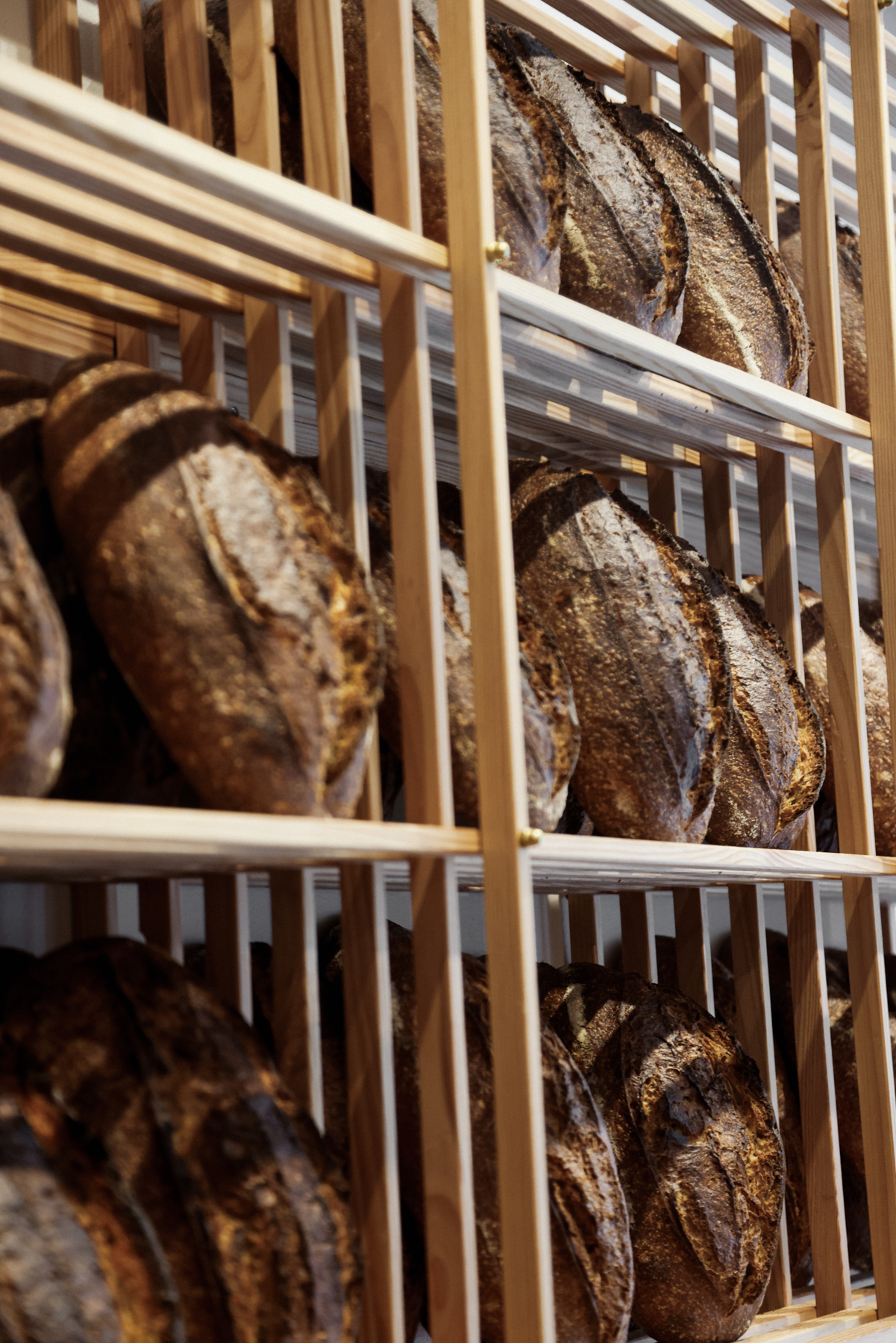 |
 | |
Craig continues, “There are two grain producers we’re working with in Denmark. Now we’re just getting to the point of the year where stuff is starting to grow. We’ll visit a rhubarb supplier this week, then start to visit the berry growers, and then also all the vegetable farmers so we can do something a bit more savory as well. And we’re going to have some stone fruit towards the end of the summer.”
In the store itself, Collective Bakery is making efforts to be as informative and transparent with the customer as possible.
“The labels tell you the flours and their percentages. Same when it comes to pastries, even down to the chocolates and all of the nuts and seeds, we work with companies that can trace straight to origin.”
 |  |
 | 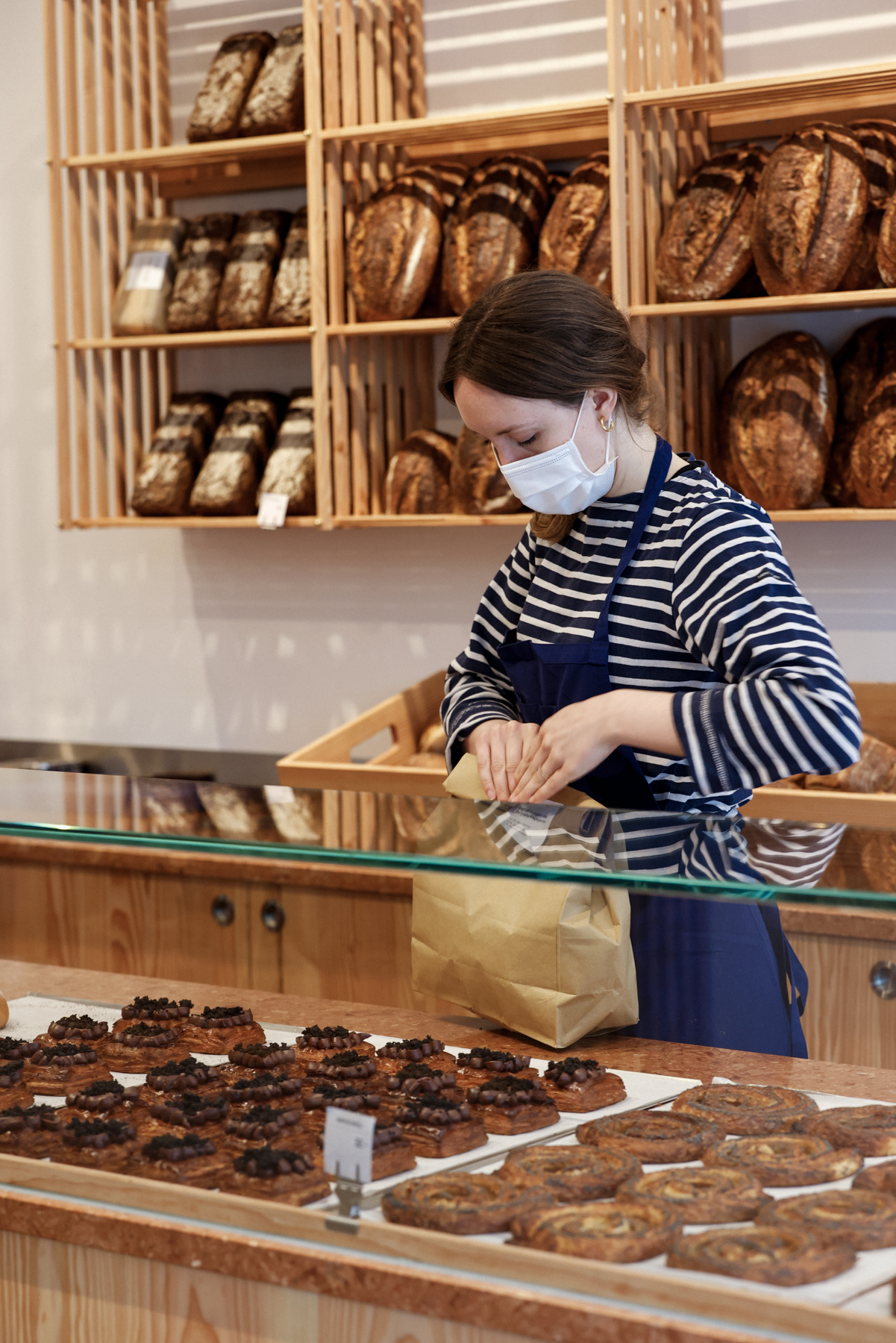 |
Word on the street is that there are too many bakeries opening in Copenhagen at the moment, but seriously, there can never be too many good bakeries in this world.
Michael points out, “I think what’s nice about all these bakeries opening right now is that there’s a conscious effort to make this community. We’re all helping each other. We literally borrow sugar and flour from one another. If we let this competitiveness come into the industry here, it’s going to be detrimental to everyone involved.”
It’s important that Copenhagen bakeries have their own like identity. “But then again, it’s a very small city, and we all share the same influences. The ones that choose to limit themselves, like us to just Danish produce and just organic produce, we’re going to face the same limitations because the flour seasons are so short. We’re working with the same stuff. But the possibilities within baking are endless. There’s no real incentive to try and copy someone else.”
Full disclosure: I used to work for Coffee Collective and have drunk the coffee-flavoured Kool-Aid. It’s delicious stuff.
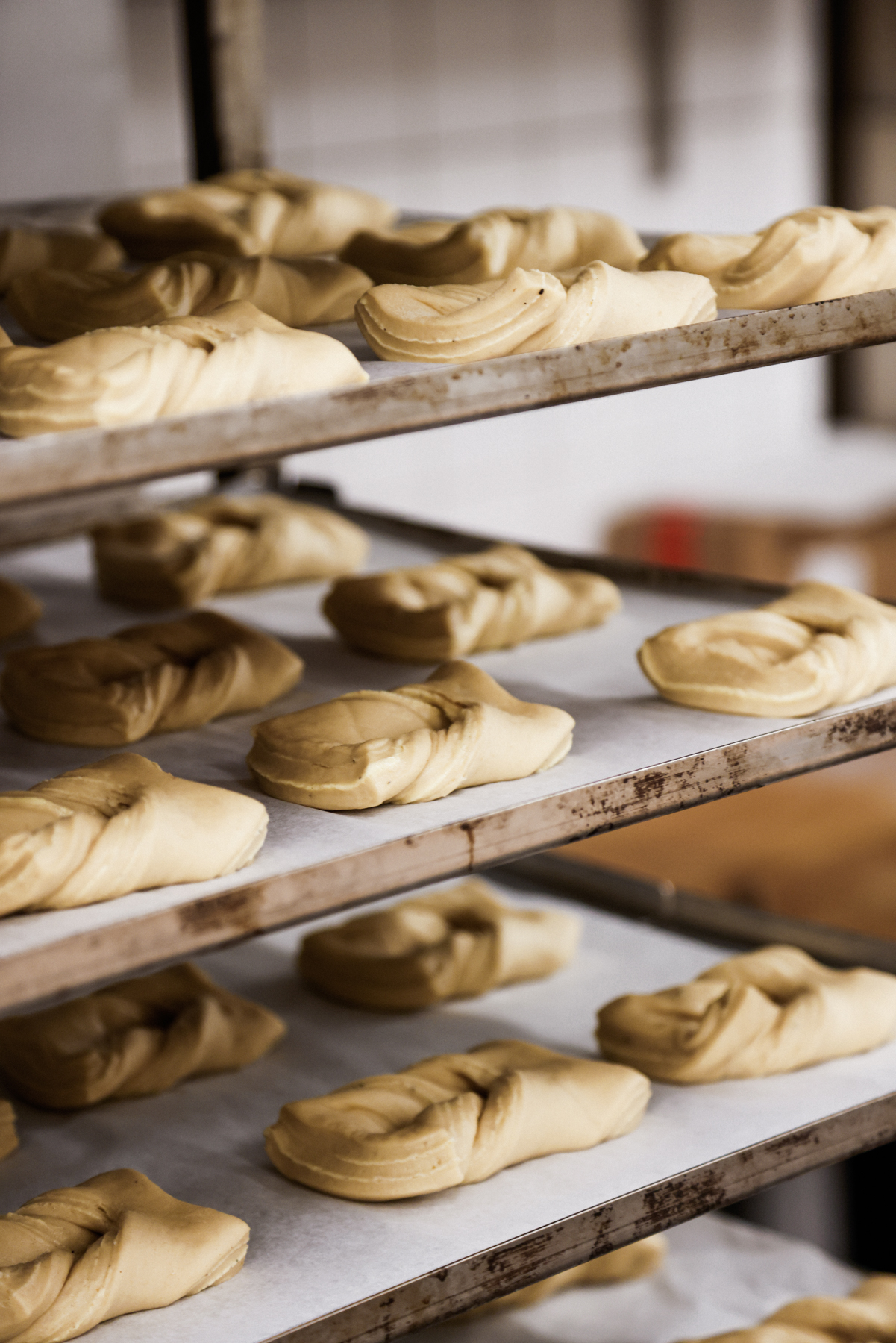 |  |
Coffee Maritozzi
“We’re trying to use waste from the coffee shop into the menu. In this Coffee Maritozzi, we make a pastry cream with espresso and a glaze that’s essentially whipped cream, and discarded coffee grains on top,” Craig says.
Maritozzi are Italian delicacies and haven’t been widely available in Copenhagen to date. Eating one was an almost religious experience; biting into the softest pillow of bread, it was a nice departure from the crackly choux pastry that fills most Danish bakeries. Bun lovers, you need to try this!
 |  |
Citronbølge (Lemon Wave)
The lemon wave is made from croissant dough scraps and put on a skewer to give it its signature shape. It’s glazed with sweet Sicilian lemon syrup. It’s subtle and not too sweet, allowing the flavors to build to a perfect last bite.
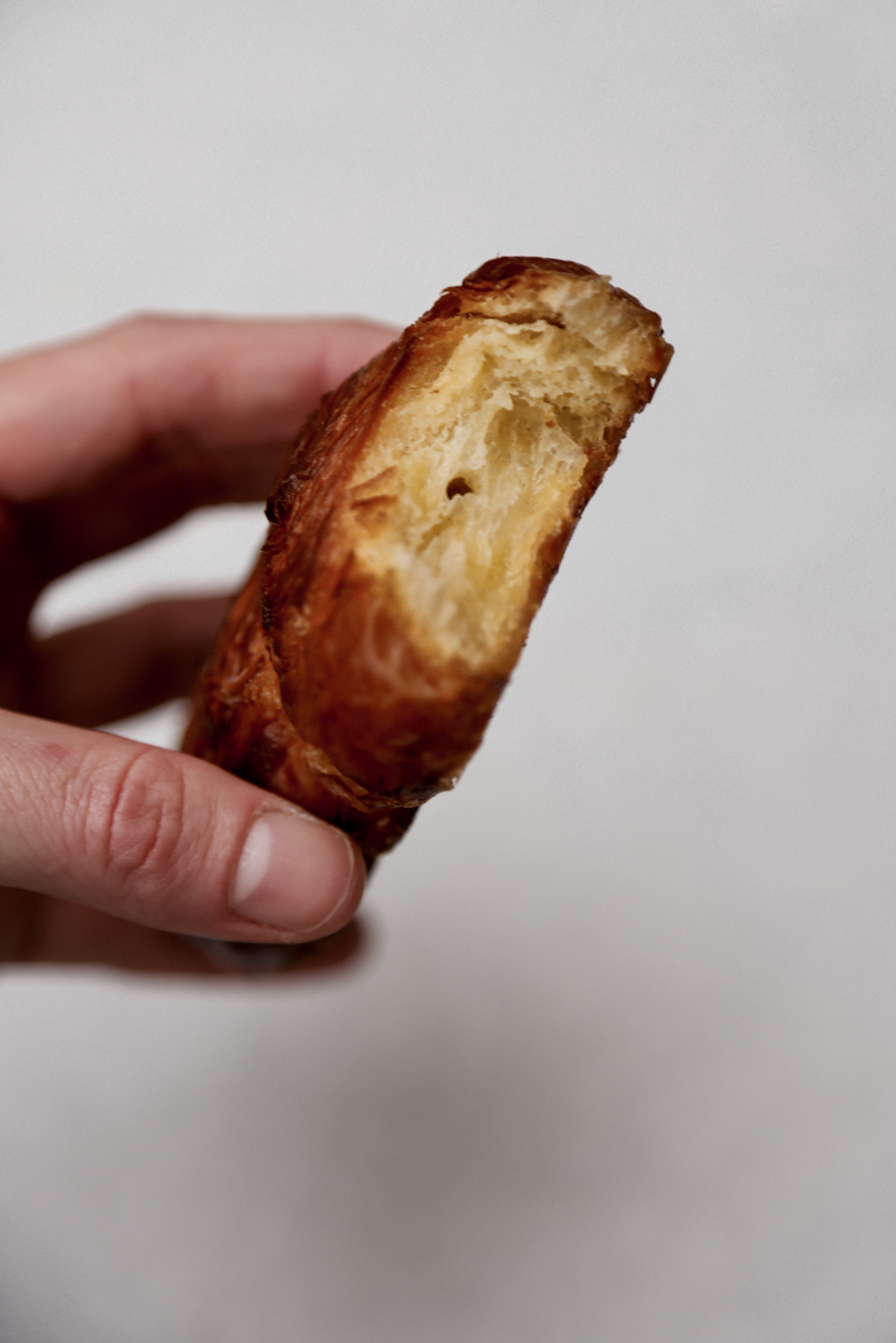 |  |
Birkesnegle
Inspired by the traditional Danish tebrikes, the birkesnegle is a slight structural upgrade because the poppyseeds don’t flake off in large chunks. It’s made with croissant dough rolled up with a ramonce made from organic marzipan, brown sugar, and butter, then topped with blue poppy seeds. Most importantly, it’s caramelized on the bottom. Simply a top-notch Danish pastry!
 | 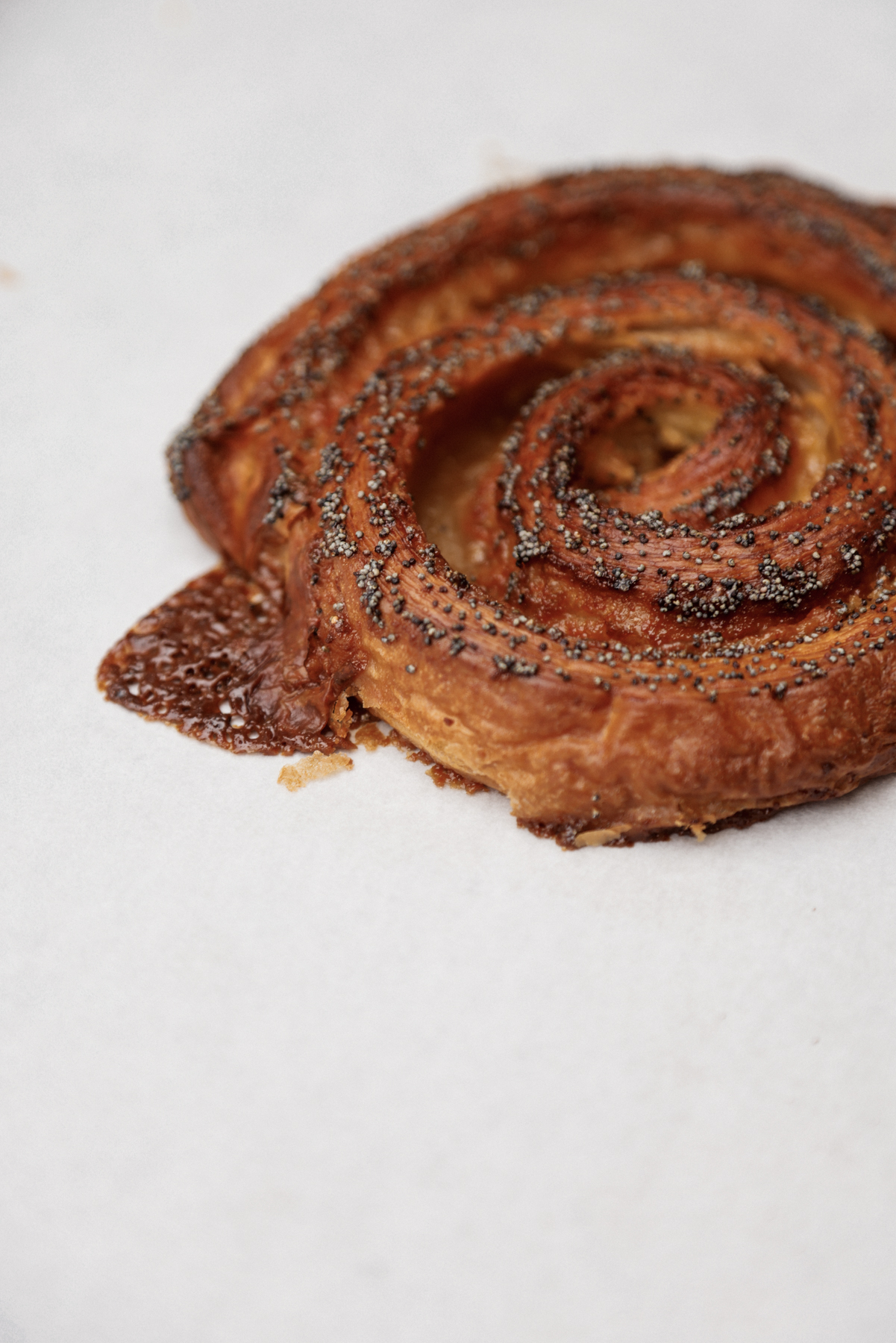 |
Food category | Bakery |
Vegetarian / vegan options? | Bread yes, pastries no |
Gluten-free options? | Not as of yet |
Recommended pastry | Citronbølge |
Menu price range | 26 DKK – 50 DKK |
Busiest day/time | Saturday |
Quietest day/time | Weekdays |
Changing table for babies? | No toilets |
Hygge factor (1 – 5) | 4 |
Pro Tip |
They also sell flour. |
Collective Bakery
Nørrebrogade 176
2200 København
Opening hours:
Mon-Fri: 7:00-18:00
Sat-Sun: 8:00-17:00
 Kuku
Kuku
The concept of Kuku began in August 2020 when Sean Pakbaz quickly sold out of 30 portions of Iranian food at a vegan fleamarket in Nørrebro. He later provided similar dishes for a literature festival, then a month later served a duck version of Ghorme Sabzi to Mændenes Hjem & Reden over Christmas. Since then, Sean has run pop-ups every weekend around the neighborhoods of Østerbro and Nørrebro.
In early April 2021, he opened his own food truck in Nørrebro, nestled between Nørrebro Bycenter and Nørrebro station.
The ideas had been percolating since 2012. Pakbaz says, “I was really tired of China Box takeaway all the time. It then hit me that there is no Iranian fast-food place in Copenhagen. Why can’t this sticky rice be Iranian saffron rice? Why can’t the green curry be Ghorne sabzi or Ash Reshte? Iranians have been living in Denmark for over 40 years. So I thought: I’m going to create this concept one day.”
 | 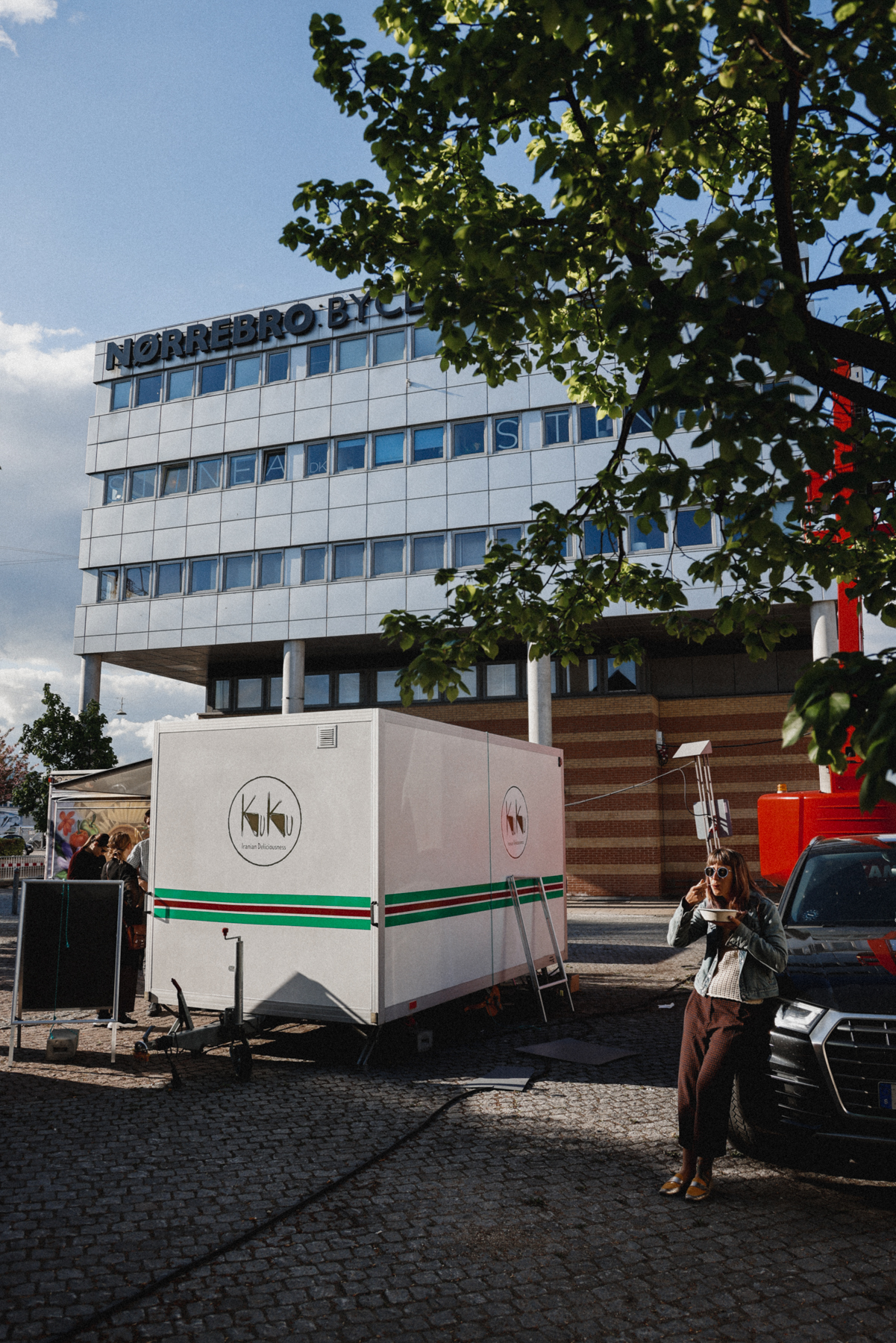 |
He continues, “The taste is 100% authentic, but the presentation is very Nordic street-food. Iranian food is a simmer food, so it sometimes doesn’t look that pretty. I made it look more presentable. The yogurt on top of the Ghorme Sabzi is called Mast-o Khiar, which is an Iranian tzatziki that you usually eat on the side in a bowl, but I made it into a dressing.”
“Everything that I know about Iranian cooking I learned from my mom’s friend, Sediqh, who is 81 years old. We call her Aziz which means ‘Dear’ or ‘Grannie’ in Farsi. She was an Iranian cook from before the mid-70s revolution in Iran. She came to Denmark in the 80s,” explains Pakbaz.
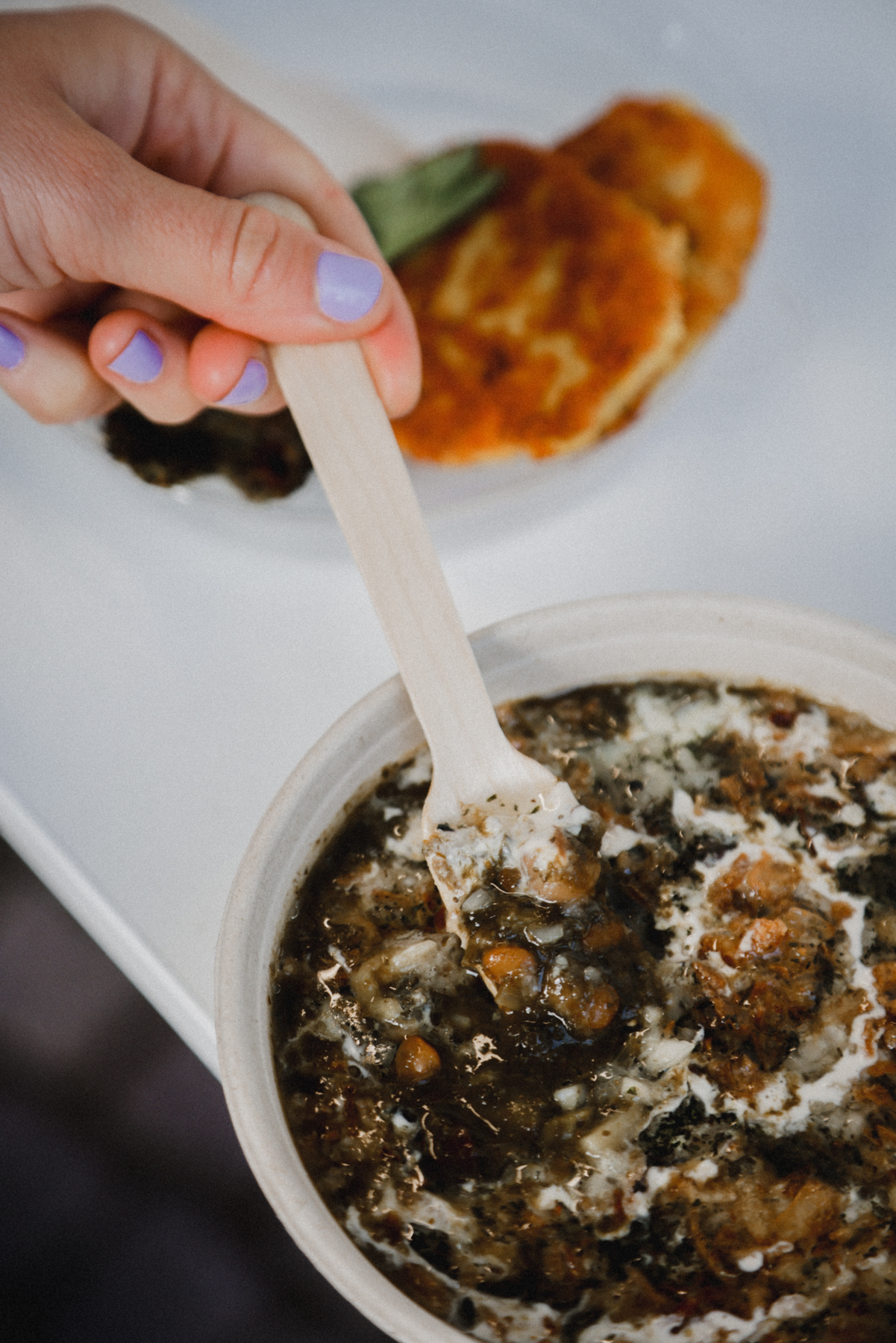 | 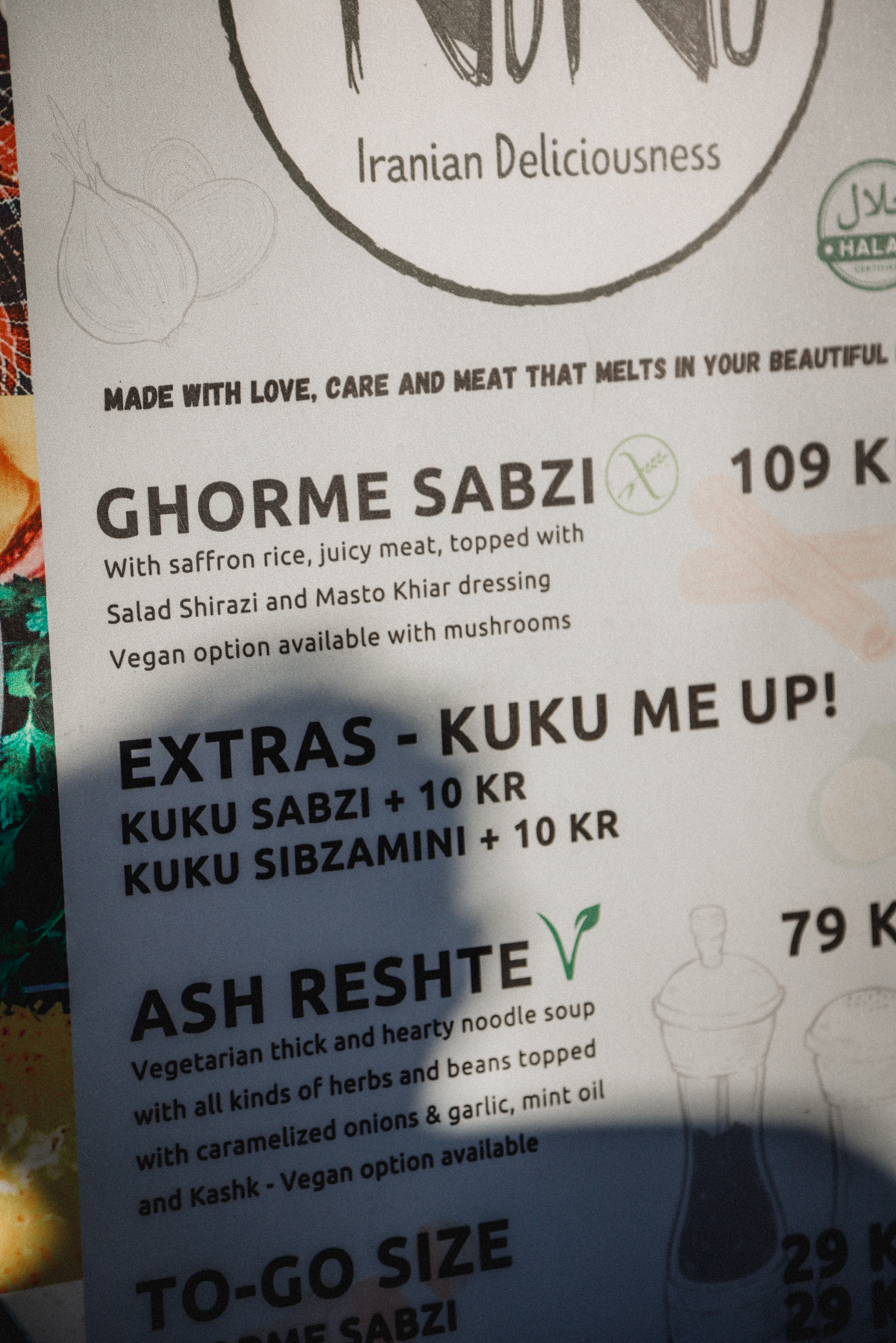 |
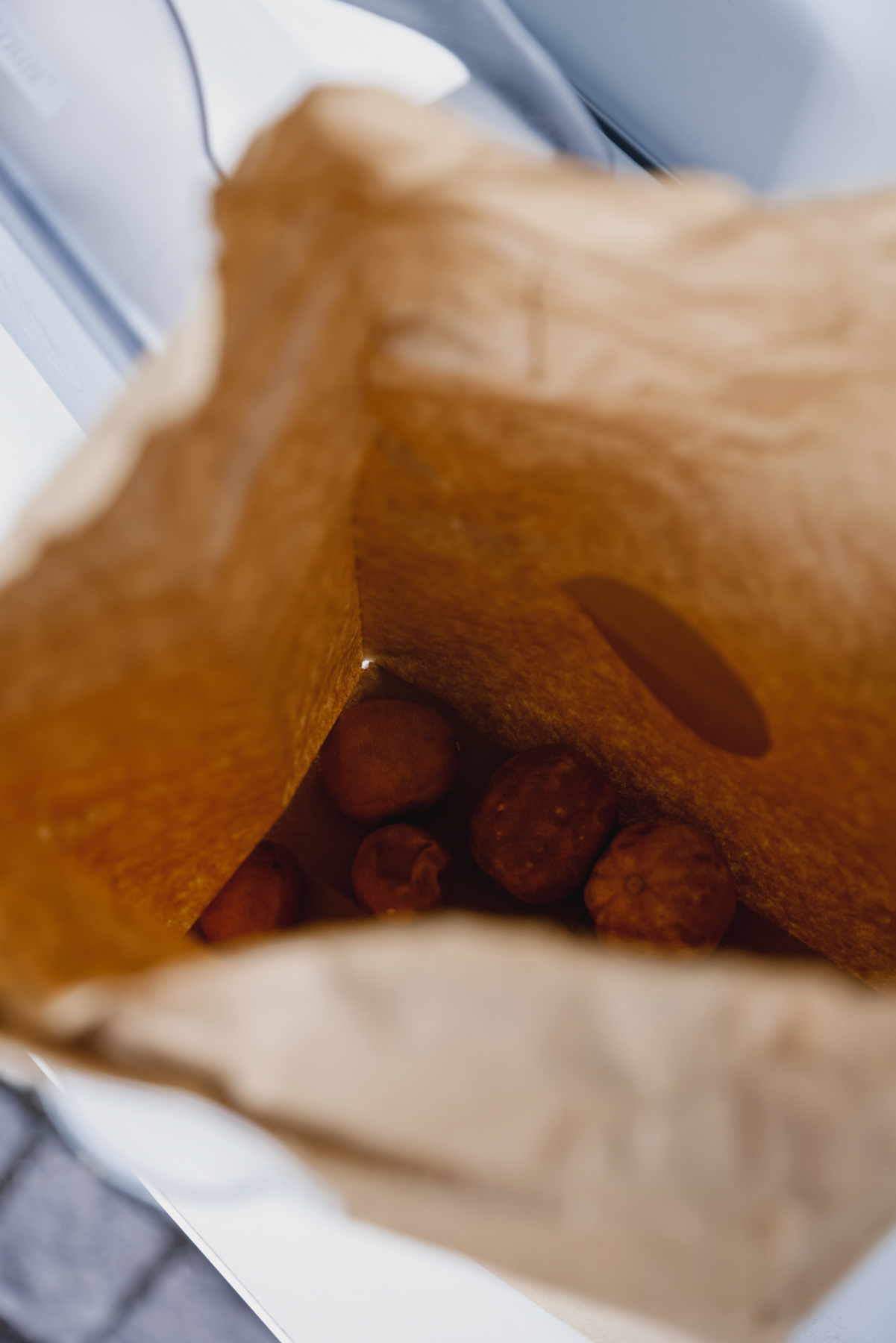 |  |
The center of Iranian food is their special saffron basmati rice, which is made using a very specific cooking method:
How to make Iranian rice
Recipe as told by Sean Pakbaz
![]() First you rinse the rice in cold water 5, 6 ,or 7 times until the water dripping off the rice is clear. The first time you rise the rice is a very milky water; that’s the starch coming off.
First you rinse the rice in cold water 5, 6 ,or 7 times until the water dripping off the rice is clear. The first time you rise the rice is a very milky water; that’s the starch coming off.
![]() Fill up the pot of rice with water. Put a lot of salt in. Then you let it sit overnight, or at least for two or three hours (overnight is preferred).
Fill up the pot of rice with water. Put a lot of salt in. Then you let it sit overnight, or at least for two or three hours (overnight is preferred).
![]() When you return, the rice has doubled in size and every single rice grain is seasoned with salt.
When you return, the rice has doubled in size and every single rice grain is seasoned with salt.
![]() Pour out the water. From then on, cook the rice like you would cook pasta. You have a big pot with a lot of water and a little bit of oil. Let the water boil and then put the rice into the pot.
Pour out the water. From then on, cook the rice like you would cook pasta. You have a big pot with a lot of water and a little bit of oil. Let the water boil and then put the rice into the pot.
![]() When the rice is al dente (you have to check it every half minute!) and 80% cooked, pour out the water while keeping the rice in the pot. Then put the lid on and steam the rice for the last 20% of cooking.
When the rice is al dente (you have to check it every half minute!) and 80% cooked, pour out the water while keeping the rice in the pot. Then put the lid on and steam the rice for the last 20% of cooking.
![]() The rice becomes longer and tastier thanks to the process, and to the salt seasoning.
The rice becomes longer and tastier thanks to the process, and to the salt seasoning.
Ghorme Sabzi
Saffron rice and juicy meat or mushrooms, topped with Shirazi salad (cucumber and tomato salad), Mast-o Khiar dressing, and of course Iranian basmati rice.
 |  |
Ash Reshte
Vegetarian thick and hearty noodle soup with herbs, beans, caramelised onions, garlic, mint oil, spinach, and Kashk (Iranian drained and fermented yogurt). Probably the most delicious thing I’ve eaten this year!
 |  |
Food category | Iranian |
Vegetarian / vegan options? | Yes! Many |
Gluten-free options? | Yes |
Recommended dish | Ash Reshte, don’t miss it! |
Menu price range | 79 DKK – 109 DKK |
Busiest day/time | Saturday and Sunday afternoons |
Quietest day/time | Weekdays from 11am to 3pm |
Changing table for babies? | No toilets |
Hygge factor (1 – 5) | Well, it’s a food truck |
Pro Tip | Ask about the dried limes. They’re boiled in salt brine and left to dry until they’re rock hard. Sean gives them away for free! |
Kuku
Lygten 2C
2400 København N
Opening hours:
Mon-Sun: 11:00-18:00 or sold out
Want more takeaway in Copenhagen? See our first and second COVID takeaway editions, as well as the city’s best food delivery service. Find out how to safely support local businesses during COVID-19 here.

